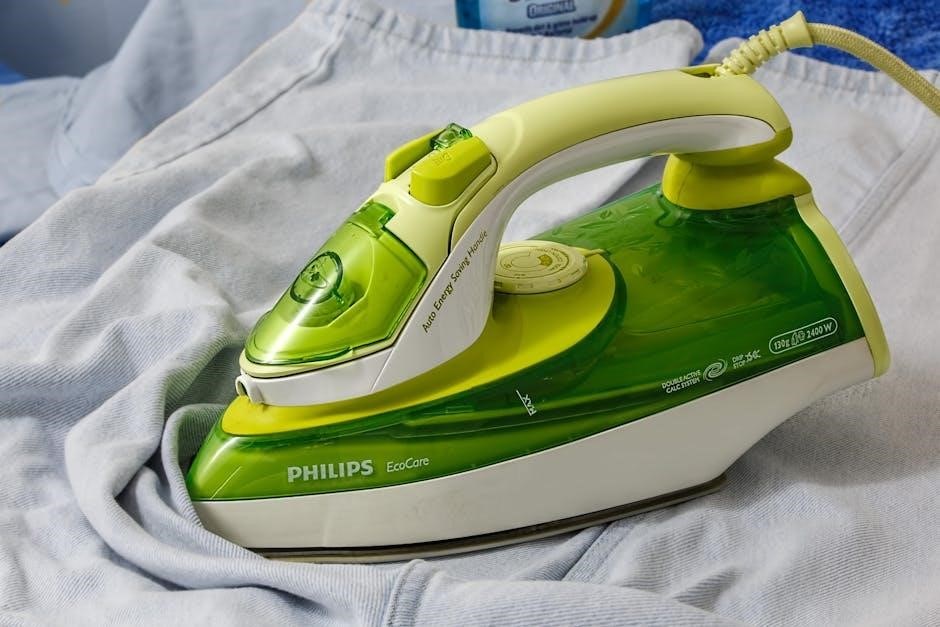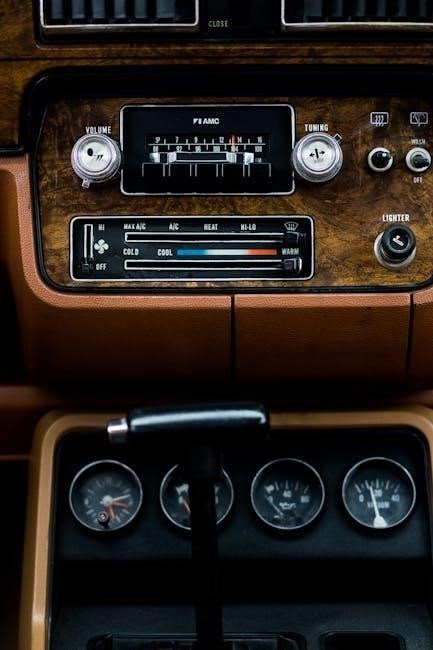
clicker products manual
Clicker Products Manual: A Comprehensive Guide
Welcome to your comprehensive guide to Clicker products! This manual offers essential information to help you understand, use, and maintain your devices. Whether you’re operating garage door openers, training pets, or utilizing manual presses, reading this manual will help to fully exploit this product’s potential.
Understanding Clicker Products
Clicker products encompass a diverse range of devices designed to simplify and enhance various aspects of daily life. Predominantly recognized for garage door openers, Clicker’s versatility extends to pet training clickers and manual clicker presses used in manufacturing and testing. These products share a common thread: intuitive functionality aimed at improving efficiency and convenience.
Garage door openers, a flagship offering, provide seamless access to residential and commercial spaces. Pet training clickers facilitate positive reinforcement, promoting effective communication and behavior modification. Manual clicker presses offer a reliable method for cutting samples of materials like rubber and leather, ensuring quality control in industrial settings.
Understanding the core principles behind each product type is crucial for optimal use. Whether it’s programming a remote, mastering clicker training techniques, or operating a manual press safely, this section equips you with foundational knowledge. Each product helps you to be successful.
Clicker’s commitment to user-friendliness is evident in their designs, making them accessible to both novice and experienced users. By grasping the fundamental concepts outlined in this manual, you’ll unlock the full potential of your Clicker product and streamline your daily tasks.
Types of Clicker Products: Garage Door Openers and More
Clicker offers a variety of products, with garage door openers being the most well-known. These openers come in different models with varying features, like remote controls, keyless entry systems, and smartphone connectivity. The remotes, such as the KLIK series, are designed for easy programming and compatibility with various garage door opener brands.
Beyond garage access, Clicker also provides solutions for other needs. Clicker training tools are popular among pet owners for positive reinforcement techniques. These simple devices emit a distinct “click” sound, which helps to clearly mark desired behaviors during training sessions.
Another offering is the manual clicker press, commonly used in industrial settings. This press is used for cutting samples of materials like rubber, leather, and paper. They ensure consistent and accurate sample preparation.
The versatility of Clicker products extends to presentation remotes, assisting speakers with seamless slide navigation. Each product type is designed with user-friendliness in mind, ensuring simple integration into daily routines. Exploring the diversity of Clicker’s product line reveals solutions tailored to various needs.
Programming Clicker Remotes (KLIK2U, KLIK5U, KLIK3U)

Programming your Clicker remote is straightforward, allowing you to control your garage door opener with ease. The KLIK2U, KLIK5U, and KLIK3U models share similar programming steps, but always refer to your specific model’s manual for accurate instructions. Before starting, identify your garage door opener’s brand and locate the “Learn” or “Program” button on the opener motor.
For most models, the process involves entering a four-digit PIN, referencing the brand ID chart in your manual, and pressing the “Learn” button on your opener. The remote will then synchronize with the opener, allowing you to control it remotely. The KLIK5U remote can be programmed to operate up to two garage door openers. Ensure that your opener utilizes safety sensors located near the bottom of the door track.
If you encounter difficulties, consult the extended online manual or watch programming videos for visual guidance. Remember to test the remote after programming to confirm successful operation.
Clicker Remote Control Battery Information
Maintaining your Clicker remote control requires attention to its battery. When the remote’s range diminishes or the indicator light dims, it’s typically a sign that the battery needs replacement. The most common type of battery used in Clicker remotes is a CR2032 button cell battery. Always consult your specific model’s manual to confirm the correct battery type.
Replacing the battery is a simple process. First, locate the battery compartment, usually on the back of the remote. Use a small screwdriver to carefully open the compartment. Remove the old battery and properly dispose of it according to local regulations. Insert the new battery, ensuring the correct polarity (+/-) is observed. Close the battery compartment securely.
After replacing the battery, test the remote to ensure it’s functioning correctly. If the remote still doesn’t work, double-check the battery polarity and ensure the battery is new and has sufficient charge. If problems persist, refer to the troubleshooting section of this manual.
Safety Guidelines for Clicker Product Use
Prioritizing safety is crucial when using Clicker products, especially garage door openers. Never permit anyone to cross the path of a moving garage door or gate. Always keep the door or gate in sight until it is completely closed.
Regularly inspect your garage door opener’s safety sensors (photo-eyes), ensuring they are properly aligned and free from obstructions. These sensors are vital for preventing the door from closing if an object is detected in its path. If your garage door opener was manufactured after 1993, it should have these safety sensors in place. If your system does not have these sensors attached and working, the opener is not compliant.
Teach children about the potential dangers of garage door openers and remotes. Store remotes out of reach of children. Never allow children to play with or operate garage door openers or gates.

Periodically test the reverse function of your garage door opener to ensure it’s working correctly. Place an object in the door’s path and verify that the door reverses upon contact. By following these safety guidelines, you can significantly reduce the risk of accidents and injuries associated with Clicker product use.
Clicker Products Compatibility (Post-1993 Garage Door Openers)

Clicker products are primarily designed for compatibility with garage door openers manufactured after 1993. These newer models utilize safety sensors, also known as photo-eyes, located near the bottom of the door track. These sensors are a crucial safety feature, preventing the door from closing if an obstruction is detected.
Before purchasing or attempting to program a Clicker remote, verify that your garage door opener has these safety sensors. If your opener lacks these sensors, it may not be compatible with Clicker products, and upgrading your opener to a newer model is strongly recommended for safety reasons.
Clicker remotes are designed to work with a wide range of brands, including Chamberlain, LiftMaster, and Craftsman. The Clicker remote can be programmed to operate up to two garage door openers or gates, including different brands, using SYSTEM BRAND SWITCHES. All programming is done using the receiver/remote DIP switches.
Refer to your garage door opener’s manual and the Clicker remote’s instructions for specific compatibility information and programming procedures.
Troubleshooting Common Clicker Product Issues
Encountering issues with your Clicker product can be frustrating, but many problems have simple solutions. This section addresses common issues and provides troubleshooting steps.
Remote Not Working: First, check the batteries. Replace them with fresh ones, ensuring correct polarity. If that doesn’t work, reprogram the remote following the instructions in the manual. Ensure the remote is within range of the garage door opener. Obstructions or interference can affect signal strength.
Keypad Not Responding: Verify the keypad has power. Replace batteries if necessary. Ensure you’re entering the correct PIN. If the keypad is exposed to weather, moisture may cause issues. Try cleaning the keypad with a dry cloth.
Garage Door Not Opening/Closing Fully: Check the garage door opener’s safety sensors. Ensure they are aligned and free from obstructions. Test the door manually to rule out mechanical issues.
Programming Difficulties: Ensure you’re following the programming steps precisely. Refer to both the Clicker manual and your garage door opener’s manual. If problems persist, consult online resources or contact customer support.
Clicker Training: Using Clickers for Pet Training
Clicker training is a powerful, positive reinforcement method for training pets. The clicker acts as a marker, signaling to your pet the exact moment they perform the desired behavior. This precise timing helps them quickly learn what you’re asking.
Getting Started: Introduce the clicker by pairing it with a reward, like a treat. Click, then immediately give the treat. Repeat this several times until your pet associates the click with something positive.
Basic Training: Start with simple commands like “sit” or “stay.” When your pet performs the desired action, click at the exact moment they do it, then reward them with a treat. Consistency is key. Keep training sessions short and positive.
Advanced Training: Once your pet understands the basics, you can use the clicker to teach more complex tricks. Break down the desired behavior into small steps, clicking and rewarding each step.
Troubleshooting: If your pet isn’t responding, make sure the clicker sound isn’t frightening them. Start with a softer click or muffle the sound. Always end training sessions on a positive note.
Manual Clicker Press: Applications and Advantages
The Manual Clicker Press, such as the MCP-5000, is a versatile tool used for die-cutting various materials. These presses are commonly employed to create standardized samples from materials like rubber, leather, and paper, adhering to ASTM, ISO, DIN, and JIS standards; Specimen dies are typically sold separately, allowing for customization based on specific testing requirements.
Applications: Manual Clicker Presses find use in quality control, research and development, and manufacturing settings. They are essential for preparing samples for tensile strength testing, abrasion resistance testing, and other material property assessments.
Advantages: The manual clicker press offers several advantages. Its surprising power and strength set it apart from other clickers. The swing-arm cutting head allows for diverse die-cutting operations using steel rule dies and clicker dies. Its hand-operated nature provides precise control over the cutting process, making it suitable for delicate or intricate designs. Furthermore, its bench-top design makes it a compact and space-saving solution for laboratories and workshops.
These presses are favored for their reliability, ease of use, and cost-effectiveness compared to more automated die-cutting systems.
Where to Find Clicker Product Manuals and Support

Accessing the correct manual and support resources is crucial for maximizing the functionality and lifespan of your Clicker product. Start by visiting the manufacturer’s official website. Most manufacturers, like Chamberlain, maintain a comprehensive online library of product manuals in PDF format. These manuals often cover setup, programming, troubleshooting, and safety guidelines.
Many retailers, such as Amazon, also offer downloadable manuals or links to the manufacturer’s website on the product page. If you have the model number of your Clicker product, searching online using the model number and the term “manual” can quickly lead you to the right document.
For additional support, explore the manufacturer’s customer service options. This may include phone support, email support, or a comprehensive FAQ section on their website. Online forums and communities dedicated to garage door openers or pet training clickers can also provide valuable insights and solutions from other users.
YouTube is another great resource. Many users upload videos showing how to program or troubleshoot their clicker devices. Remember to always check the date of the video to ensure the information is current.


Leave a Reply
You must be logged in to post a comment.